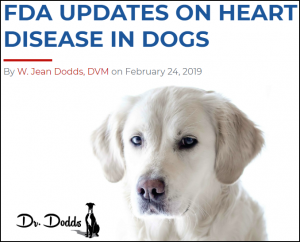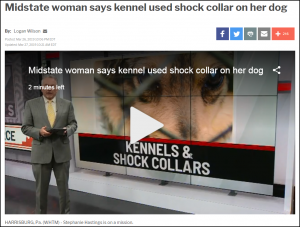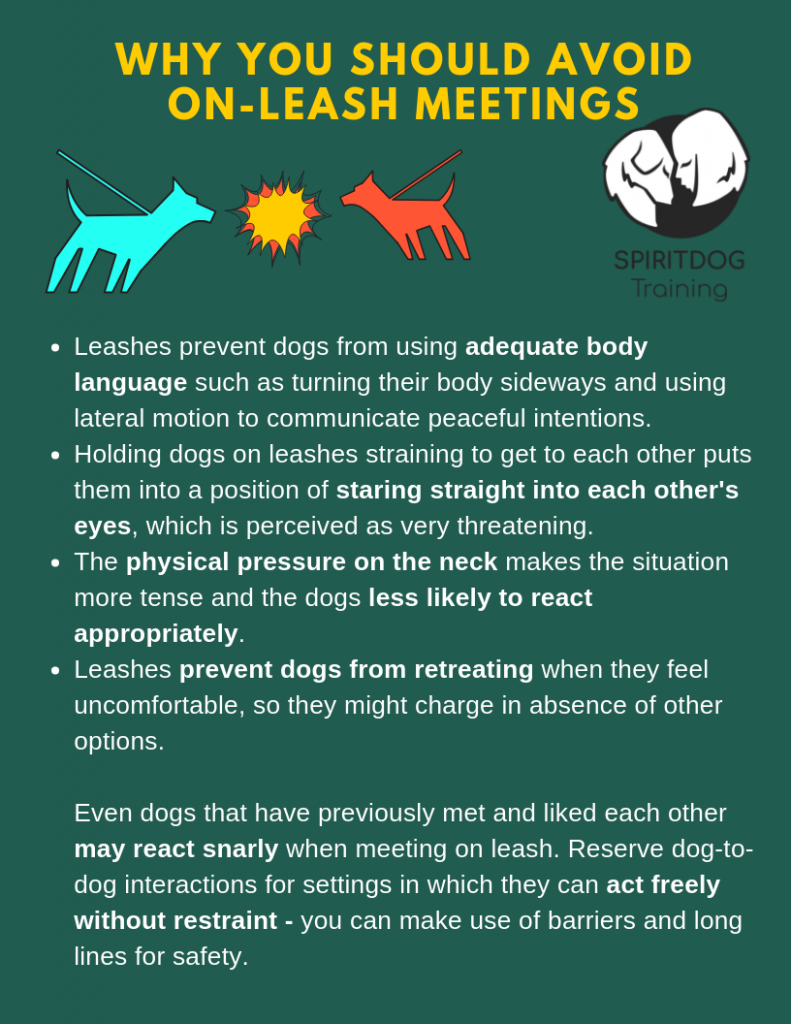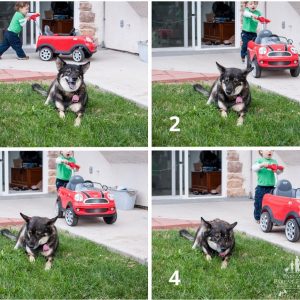< a short link to this post – http://bit.ly/dodoDW-Holly >
If you found this post because you have a dog that is guarding their food or is doing any type of resource guarding or other form of aggression, I strongly encourage you to seek professional help from a Certified Dog Behavior Consultant ( click to find a CDBC near you ), a Certified Applied Animal Behaviorist, CAAB ( click to find a CAAB near you ), or a Veterinarian that is Board Certified in Veterinary Behavior, DACVB ( click to find a DACVB near you ). Resource guarding or any type of aggression by a dog has the potential to result in a dog bite. If you are concerned that your dog has a high probability of biting you need to address this immediately. A dog that bites can be very dangerous < click to read about dangerous dogs >. As you will see in the following video provoking the dog or threatening them or trying to be “dominant” is only likely to make matters worse.
There is a segment in the documentary film Dogs, Cats and Scapegoats < click to view > that shows the Dog Whisperer, Cesar Milan, punching a yellow Labrador Retriever in the neck, allegedly to teach her not to guard her food. I am sharing this blog post and video because it is an excellent tool for learning more about canine body language when a dog is feeling threatened.
 In a November 2014 blog post from the dodo, Marc Bekoff, professor emeritus of Ecology and Evolutionary Biology at the University of Colorado, Boulder, and a Fellow of the Animal Behavior Society, discusses this episode, Showdown with Holly, and a slow-motion version of the show entitled Show Down with Holly in Slow Motion – A dissection of canine body language. The latter adds commentary that points out the body language used by Holly to indicate that she was feeling threatened. It also illustrates the additional
In a November 2014 blog post from the dodo, Marc Bekoff, professor emeritus of Ecology and Evolutionary Biology at the University of Colorado, Boulder, and a Fellow of the Animal Behavior Society, discusses this episode, Showdown with Holly, and a slow-motion version of the show entitled Show Down with Holly in Slow Motion – A dissection of canine body language. The latter adds commentary that points out the body language used by Holly to indicate that she was feeling threatened. It also illustrates the additional 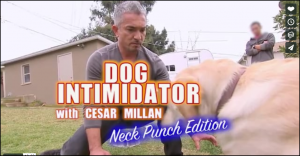 visual signals Holly uses in an attempt to de-escalate the confrontation. Milan was either unaware of these signals and their importance (I didn’t see that coming!) or simply chose to ignore them. Milan is bitten when he moves the same hand he used to punch Holly near her face. < click to view > NOTE: You will need to click on “Uncover Video.”
visual signals Holly uses in an attempt to de-escalate the confrontation. Milan was either unaware of these signals and their importance (I didn’t see that coming!) or simply chose to ignore them. Milan is bitten when he moves the same hand he used to punch Holly near her face. < click to view > NOTE: You will need to click on “Uncover Video.”
Bekoff has this to say about the video Show Down with Holly in Slow Motion – A dissection of canine body language:
“This short video is a wonderful example of dog body language. I think of it as a crash course in canid ethology — dog behavior 101. I highly recommend those people who want to see what happened to study this video very closely. I’ve watched countless hours of video of a wide variety of social encounters in various canids — members of the dog family — and I still learned a lot from this encounter. I watched it more than a dozen times and I’m sure I’ll go back to it.”
“There are many lessons in this video about how dogs communicate what they’re feeling using all parts of their body and various vocalizations. There also are valuable lessons for the need to respect what a dog is telling us, what they want and what they need. Holly was very clear about her state of mind, what she was feeling, and what she needed.”
I encourage you to read Marc Bekoff’s entire blog post < click here >
At the conclusion of Show Down with Holly in Slow Motion – A dissection of canine body language you will find two links to more information. The first is an excellent article on resource guarding by Dr. Patricia McConnell, a Certified Applied Animal Behaviorist and author < click to read >. The second is a blog post by Jim Crosby < click to read > which provides a written description with time codes of the Showdown with Holly as it originally appeared on TV < click to view >. It is also very educational for those wishing to learn more about canine body language.
It is important to note that training your dog will NOT typically resolve resource guarding issues — a dog that is behaving aggressively, whether due to fear or anger, is responding emotionally. Teaching your dog to sit, leave it, or any other behavior is all about teaching them to offer a specific behavior when given a particular cue. Training is unlikely to change a negative emotion and may make it worse. Emotional responses can be altered through behavior modification, and that is where a Certified Dog Behavior Consultant, a Certified Applied Animal Behaviorist, or a Veterinarian that is Board Certified in Veterinary Behavior, DACVB can help you.
As a Certified Dog Behavior Consultant, CDBC I offer behavior consultations for clients with dogs with problem behaviors. You can learn more about those services at our website < click to read > and about my approach to these types of problems in this article from my blog; Help! My Dog is Aggressive, Reactive, Fearful, Anxious, etc. – What do I do? < click to read >.
Recommended Resources
Articles on Don’s Blog
Dangerous Dogs! – What Shelters, Rescues, Prospective Adopters, and Owners Need to Know – http://bit.ly/Dangerous-Dogs
Dominance: Reality or Myth – http://bit.ly/Dominance-RealityorMyth
Things I Wish I Had Known Before I Started Training Dogs – Gus, the Dominance Myth, An Alpha Roll, and a Damaged Relationship – http://bit.ly/Things-Gus-Dominance
What Should I Do When My Dog Does Not Let Me Take Something They Have Stolen and Snaps or Tries to Bite Me? – http://bit.ly/StealGuardGrowlSnap
Help! My Dog is Aggressive, Reactive, Fearful, Anxious, etc. – What do I do? – http://bit.ly/HelpDogAggx
Shared Blog Post – Dogs, Cats and Scapegoats: Messes We Make With Companions – A new film by Hugh Dorigo about the plight of millions of companion animals by Marc Bekoff in Psychology Today – http://blog.greenacreskennel.com/2017/09/25/shared-blog-post-dogs-cats-and-scapegoats-messes-we-make-with-companions-a-new-film-by-hugh-dorigo-about-the-plight-of-millions-of-companion-animals-by-marc-bekoff-in-psychology/
Podcast – The Woof Meow Show: The documentary film Dogs, Cats and Scapegoats with Producer and Director, Hugh Dorigo – http://blog.greenacreskennel.com/2017/09/23/podcast-the-woof-meow-show-the-documentary-film-dogs-cats-and-scapegoats-with-producer-and-director-hugh-dorigo/
Books
Mine! – A Practical Guide To Resource Guarding In Dogs, Jean Donaldson, Dogwise Publishing, 2002
Other Articles On The Web
Cesar, When You Hit A Dog You Pay The Price – Marc Bekoff – https://www.thedodo.com/cesar-when-you-hit-a-dog-you-p-812125567.html
The Other End of the Leash, Dr. Patricia McConnell – Resource Guarding: Treatment and Prevention – https://www.patriciamcconnell.com/theotherendoftheleash/resource-guarding-treatment-and-prevention
Canine Aggression Issues with Jim Crosby – Food Aggression and a Famous Trainer – http://jimcrosby.canineaggressionissueswithjimcrosby.com/2012/09/food-aggression-and-famous-trainer.html
Videos
Show Down with Holly in Slow Motion – A dissection of canine body language – https://www.facebook.com/799673286/videos/10152902693393287/ – NOTE: You will need to click on “Uncover Video.”
Showdown with Holly | Dog Whisperer – https://www.youtube.com/watch?v=9ihXq_WwiWM&feature=share
Resources for Finding Help From A Credentialed Expert in Canine Behavior
The American College of Veterinary Behaviorists (ACVB) – https://www.dacvb.org/search/custom.asp?id=4709
The Animal Behavior Society (ABS) – http://www.animalbehaviorsociety.org/web/applied-behavior-caab-directory.php
The International Association of Animal Behavior Consultants (IAABC) – https://iaabc.org/consultants
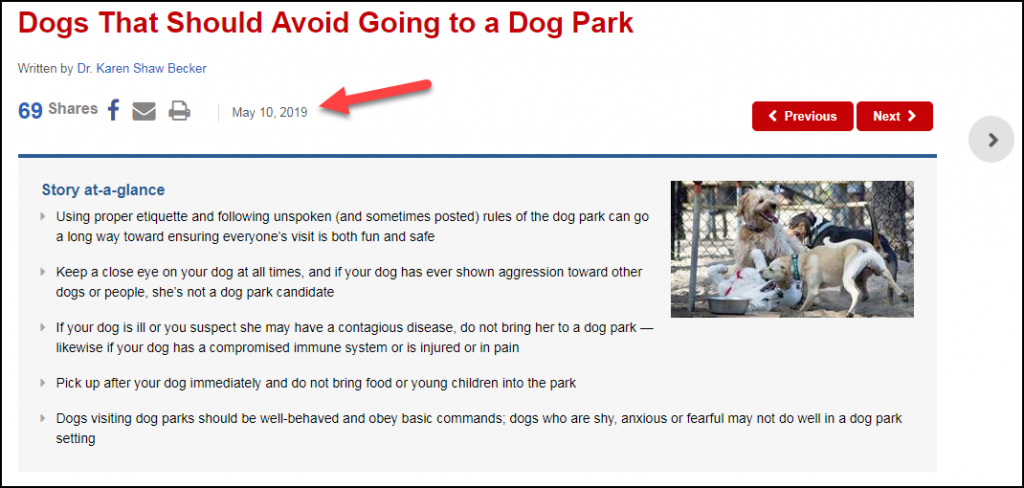 In this post from May 10th, 2019, veterinarian Dr. Karen Becker discusses dog parks and why they are not appropriate for all dog dogs. < Click to read Dr. Becker’s post >
In this post from May 10th, 2019, veterinarian Dr. Karen Becker discusses dog parks and why they are not appropriate for all dog dogs. < Click to read Dr. Becker’s post >

